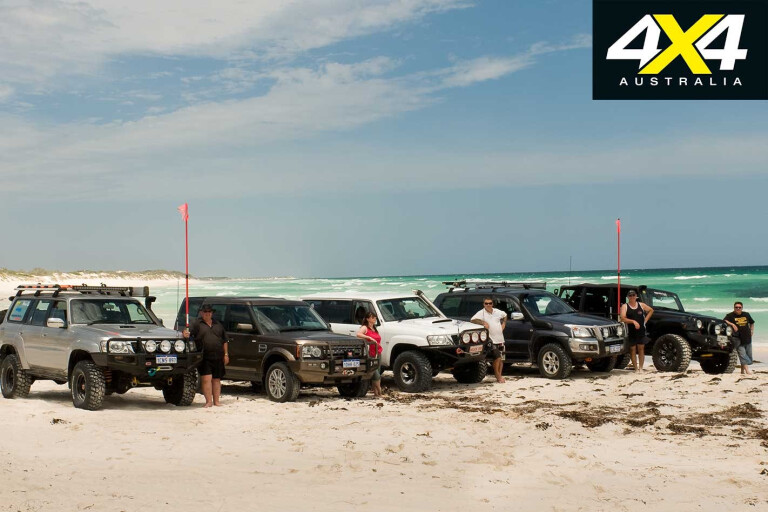
While you may not have heard of the Nambung National Park, you’ve undoubtedly heard of its main natural attraction, the Pinnacles.
This article was originally published in 4x4 Australia’s September 2012 issue
But there’s plenty more to the Nambung NP than this moonscape must-see. Nambung NP is about 200km north of Perth and can be reached via the coastal Wanneroo Road and Indian Ocean Drive. With glimpses of blue water, this drive provides a scenic route through to Cervantes.
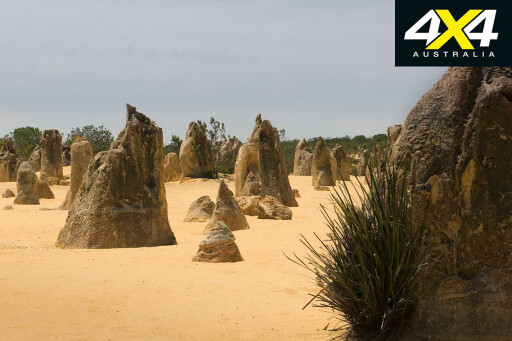 We chose to head up the inland Brand Highway to check out some spots around Gingin, about 83km north of Perth. With a long history of agriculture, Gingin is a developing hot-spot for wine and olives, adding to the quality local beef and other regional produce.
We chose to head up the inland Brand Highway to check out some spots around Gingin, about 83km north of Perth. With a long history of agriculture, Gingin is a developing hot-spot for wine and olives, adding to the quality local beef and other regional produce.
Gingin is just off the Brand Highway and built on the Gingin Brook that rises from springs not far from town. Here you can savour an excellent lunch overlooking the beautiful Granville Park where there’s a replica of the waterwheel from the original Cheriton flour mill. The wheel normally serves the fountain, and is turned by the Gingin brook passing through the park, but when we visited, it was being repaired.
 Across the road you’ll find the Pioneer Pavilion and the Jim Gordon Victoria Cross Trail that commemorates one of Gingin’s bravest sons who was one of only 20 Australians awarded a Victoria Cross medal for gallantry in World War II.
Across the road you’ll find the Pioneer Pavilion and the Jim Gordon Victoria Cross Trail that commemorates one of Gingin’s bravest sons who was one of only 20 Australians awarded a Victoria Cross medal for gallantry in World War II.
The trail’s boardwalk winds under a canopy of venerable old paperbarks and through ferns and lilies. Even after a long hot summer, pools of water remain and the wetlands remain lush and green. The township also has some interesting colonial buildings dating from the 1880s.
One house caught our eye: beautifully crafted from local stone circa 1887 it remains a private dwelling – eight solar panels on the roof confirmed it was still a very much lived-in home.
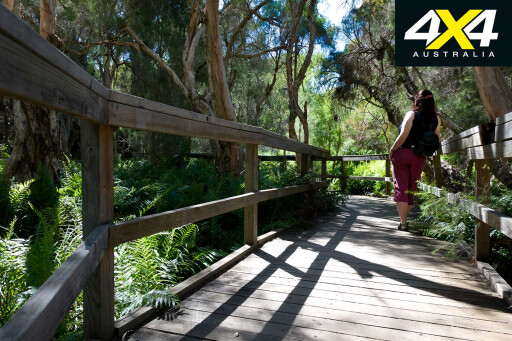 On nearby Gingin Brook Road is West Coast Honey, the home of Kuyan Apiaries, the largest beekeeping business in Western Australia with a history that dates back over a hundred years. The shop has a beehive hanging from the roof where you can watch bees busily coming and going, going about their work.
On nearby Gingin Brook Road is West Coast Honey, the home of Kuyan Apiaries, the largest beekeeping business in Western Australia with a history that dates back over a hundred years. The shop has a beehive hanging from the roof where you can watch bees busily coming and going, going about their work.
Further down Gingin Brook Road towards the coast you’ll find Military Road and the Gingin Discovery Centre and Observatory.
The observatory, complete with a fully retractable roof, houses five telescopes, including the largest in Australia available to the public. Two stargazing sessions are run in the evenings and you can book online at ginginobservatory.com. Although it’s relatively close to Perth, the Gingin Observatory is little affected by light or air pollution and offers a quality stargazing experience.
 Meanwhile, the Discovery Centre provides a couple of hours of ‘edu-tainment’ even for big kids. Science is made cool by plenty of hands-on exhibits that show gravity at work and explain how the universe was formed. You can test your strength on the magnetic pole, listen to a drum through the sound coil, and test your weight on different planets – discover on which planet you will weigh the less after find a big lunch.
Meanwhile, the Discovery Centre provides a couple of hours of ‘edu-tainment’ even for big kids. Science is made cool by plenty of hands-on exhibits that show gravity at work and explain how the universe was formed. You can test your strength on the magnetic pole, listen to a drum through the sound coil, and test your weight on different planets – discover on which planet you will weigh the less after find a big lunch.
Nearby short bushwalks are detailed on a leaflet available at the centre. The tracks meander through paperbarks, white myrtles and past a tall grass tree estimated to be 400 years old. During wildflower season purple flags, enamel orchids, fringe lilies and many more colourful natives are on bright display.
Outside the centre is the 45-metre tall Leaning Tower of Gingin. Inspired by the Leaning Tower of Pisa, which tilts at a 5.5 degrees, the Gingin tower has a much more precarious 15 degree slant, although all safely anchored by 180 tons of concrete.
 Armed with water balloons available from the ticket booth, you can climb up to enjoy a breezy view across to the Darling Scarp. Dropping the balloons filled with varying amounts of water provides the opportunity to test whether heavier objects fall faster than those that are lighter.
Armed with water balloons available from the ticket booth, you can climb up to enjoy a breezy view across to the Darling Scarp. Dropping the balloons filled with varying amounts of water provides the opportunity to test whether heavier objects fall faster than those that are lighter.
After filling our minds with fascinating facts that were likely to be fast forgotten, it was time to make camp for the night.
Accommodation in the area is primarily caravan parks or B&Bs rather than bush camping. There are caravan parks at most of the coastal communities including Guilderton, Ledge Point, Lancelin and Cervantes, and farm-stay caravan parks are also a popular choice.
 Beach-camping is discouraged; patrolling rangers have been known to dish out heavy fines. The coastal parks are windy more often than not and lightweight tents are regular victims that end up in caravan-park bins rather than making it home. Try to pitch camp with any canvas between sheltering vehicles and ask the caravan park operators for the best way to angle your site.
Beach-camping is discouraged; patrolling rangers have been known to dish out heavy fines. The coastal parks are windy more often than not and lightweight tents are regular victims that end up in caravan-park bins rather than making it home. Try to pitch camp with any canvas between sheltering vehicles and ask the caravan park operators for the best way to angle your site.
Saturday was our 4X4 play day. From Lancelin to Cervantes it’s all about sand, sea and more sand. Your options are to drive up the smooth bitumen between the two fishing communities and head down to beautiful beaches that are accessible without a 4X4. Or drive along the beach all the way taking regular breaks to fish, swim, wind-surf or kite-surf.
The beach, however, can be an unforgiving as it is steeply angled in many parts and always soft. As a popular destination, particularly on long weekends and holiday periods, the sand can be churned up by a multitude of 4X4s and not everyone has the sense to lower their tyre pressures to minimise the damage to the beach or their vehicle.
 To make your day out a good one don’t travel the beach alone, make sure you check when high tide occurs and always carry plenty of sand recovery equipment.
To make your day out a good one don’t travel the beach alone, make sure you check when high tide occurs and always carry plenty of sand recovery equipment.
The Lancelin sand dunes are big enough for hundreds of people to play on and you’ll find 4X4s, sandboards, motorbikes and dune buggies all competing for a bit of the action.
Sandboarding is a fabulous way to wear out even the most hyperactive of children. Coming down the dunes is a blast, regulating your speed by just digging in your hands for instant braking. But climbing repeatedly back up the dunes is a lot tougher and is guaranteed to encourage huge appetites and the need to hit the swag very early.
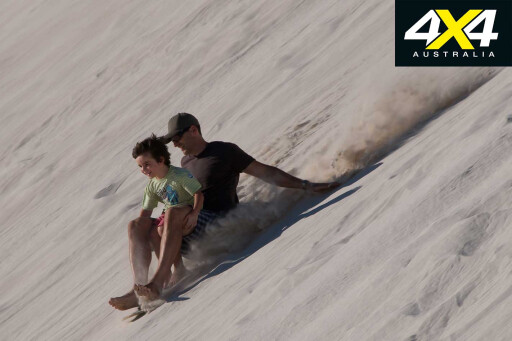 Rangers monitor the area quite closely to ensure all vehicles are registered, at least for off-road use, and to minimise any dangerous behavior. The main entrance to the dunes is just past the Lancelin shopping area but access is also possible from other points along the coast.
Rangers monitor the area quite closely to ensure all vehicles are registered, at least for off-road use, and to minimise any dangerous behavior. The main entrance to the dunes is just past the Lancelin shopping area but access is also possible from other points along the coast.
The Wedge Island shack community, 30km north of Lancelin, is an interesting piece of history. The shacks date back to the 1950s and are currently the subject of a strenuous community struggle to retain the right to a simple way of life for fishing and peaceful holiday-making in the face of state and local government regulation.
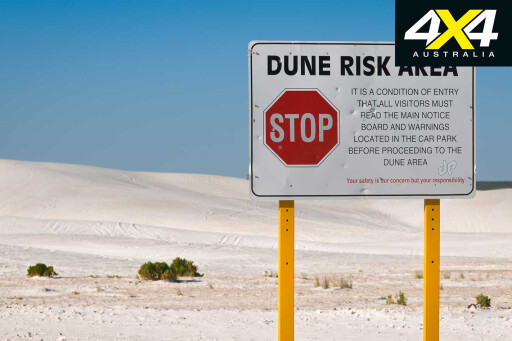 Further up the coast towards Cervantes are more beaches with easy access off the main road. Hangover Bay and Kangaroo Point are both within 10 minutes drive of the entrance to Nambung National Park and the Pinnacles. Visitors to either beach are well catered for with shelters and gas barbecues.
Further up the coast towards Cervantes are more beaches with easy access off the main road. Hangover Bay and Kangaroo Point are both within 10 minutes drive of the entrance to Nambung National Park and the Pinnacles. Visitors to either beach are well catered for with shelters and gas barbecues.
Visit Hangover Bay for possible sightings of dolphins and sea lions or to enjoy ideal windsurfing conditions. Unsurprisingly, Kangaroo Point is regularly visited at dusk by the local roo population and it is an ideal beach barbecue spot.
Our visit highlighted the ever-changing beach conditions with the generally pristine white sand almost completely obscured by a recent dump of seaweed.
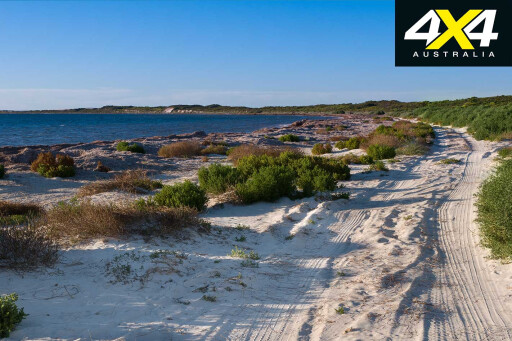 The alternative dusk option is to sit back and watch the sun burn out in a blaze of golden glory over the Pinnacles. If you arrive before 5pm you can take in a quick tour of the Interpretive Centre. As well as some history and geology it showcases the local fauna including a display of bush cockroaches that are as big as the native honey possums – around 9cm long.
The alternative dusk option is to sit back and watch the sun burn out in a blaze of golden glory over the Pinnacles. If you arrive before 5pm you can take in a quick tour of the Interpretive Centre. As well as some history and geology it showcases the local fauna including a display of bush cockroaches that are as big as the native honey possums – around 9cm long.
There is an $11 entry fee to the park, with an honour box in place after 5pm. A well-graded road meanders through the strange scenery of the Pinnacles desert which is suitable for 2WDs, but don’t try to tow your camper through the twisting turns.
While the scientists haven’t quite agreed yet on how the Pinnacles were formed, they have conclusively ruled out the idea that they are the ruins of an ancient city as originally thought by Dutch sailors sighting the strange formations in the 17th century.
 The raw material for the limestone Pinnacles almost certainly came from an era when seashells were broken down into lime-rich sands and blown inland to form high mobile dunes. Over millennia, the limestone formations have been shaped by compression, the action of vegetation, wind and water into thousands of weird and wonderful shapes that range from a few centimetres high to more than 5m tall. They include simple columns and other more complex forms that have been christened the Seal, the Koala or the Two Nuns.
The raw material for the limestone Pinnacles almost certainly came from an era when seashells were broken down into lime-rich sands and blown inland to form high mobile dunes. Over millennia, the limestone formations have been shaped by compression, the action of vegetation, wind and water into thousands of weird and wonderful shapes that range from a few centimetres high to more than 5m tall. They include simple columns and other more complex forms that have been christened the Seal, the Koala or the Two Nuns.
After packing up on Sunday morning in Ledge Point we decided to take the long way home to check out a few more tourist destinations. With food in mind we headed up the Indian Ocean Drive to Cervantes and the Lobster Shack, run by the Thompson family.
With three generations in the lobster-fishing industry, the Thompsons opened up their processing factory to provide the opportunity for visitors to develop a better understanding of how lobsters are caught and prepared for delivery to tables around the world. You can finish up your visit with the purchase of some delicious, freshly cooked lobsters or prawns, or enjoy a lobster burger in the newly opened café.
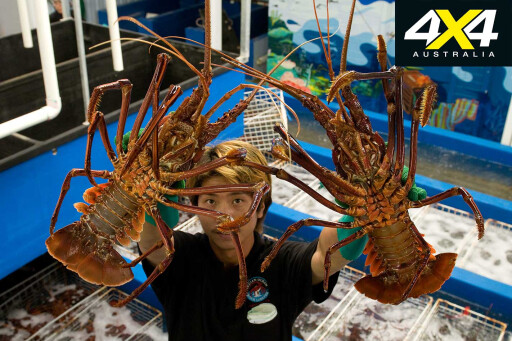 Emu Downs wind farm is 30km from Cervantes via the Indian Ocean Drive, Cervantes Road, Brand Highway, Munbiniea Road and Bibby Road.
Emu Downs wind farm is 30km from Cervantes via the Indian Ocean Drive, Cervantes Road, Brand Highway, Munbiniea Road and Bibby Road.
This wind farm was built in 2006 at a cost of $180 million to produce 80-megawatt of power. Each of the 48 turbines has a 1.65-megawatt generating capacity, which provides enough electricity to run the Perth Seawater Desalination Plant, in Kwinana.
 Drawing on Indian Ocean water, this plant produces around 130 million litres of pure drinking water per day. Although viewing of the wind farm is from a distance, the interpretive boards at the viewing area provide all the key statistics.
Drawing on Indian Ocean water, this plant produces around 130 million litres of pure drinking water per day. Although viewing of the wind farm is from a distance, the interpretive boards at the viewing area provide all the key statistics.
On the return trip to Perth via the Brand Highway, Regan’s Ford Roadhouse provides good tucker and local produce including Regan’s Ford and Fini olives.
As we headed for home we agreed that it wouldn’t be hard to find an excuse to come back and spend more time exploring and enjoying this wonderful area.
 COASTAL TRACKS
COASTAL TRACKS
The inland tracks that meander through the coastal scrub between Lancelin and Cervantes were once heavily frequented by 4X4s and were the fastest route between the two towns. However, the opening of the Indian Ocean Drive brought the subsequent closure of the Defence Forces Training Area to limit the risk from unexploded ordinance.
 Narrow tracks remain close to the coast and offer an alternative when the beach is washed away after storms or high tides, but they can be very overgrown and the resulting paintwork scratches take much longer to buff out than it first appears.
Narrow tracks remain close to the coast and offer an alternative when the beach is washed away after storms or high tides, but they can be very overgrown and the resulting paintwork scratches take much longer to buff out than it first appears.
The tracks are also scattered with sharp limestone rocks and our lead vehicle was unfortunate enough to rip out a tyre sidewall. Although they can be awkward due to the overhanging trees, a sand flag is a must as the narrow tracks have blind corners and offer few places to pass.
TRAVEL PLANNER
 GETTING THERE
GETTING THERE
Nambung National Park is two hours north of Perth via the Wanneroo Road and Indian Ocean Drive, or inland via the Brand Highway.
WHERE TO STAY
No bush or beach camping is permitted in the area. There are caravan parks at each of the coastal towns. Inland there are farm-stays. The area also has many B&Bs. The Ledge Point Caravan Park provides excellent facilities including a pool, playground and kart hire for the kids. Fees vary by season and the type of facility. Expect daily rates of $25 for an unpowered tent site up to $60 for a powered site in peak season.
OPENING HOURS
Check the websites of the major attractions for opening hours. Call wineries or restaurants to confirm opening times and availability. Check www.gingintourism.com.au or www.australiascoralcoast.com for contact details of most local attractions and accommodation.
PERMITS/FEES
Park entry fees apply, but only if you are visiting the Pinnacles.
BEST TIME OF THE YEAR TO VISIT
Spring for wildflowers and autumn for warm sunny days to play in the sand. There’s plenty of beach play during summer, but it can be windy.

COMMENTS